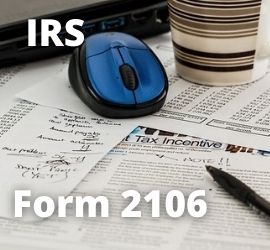What Is Form 8857: Request for Innocent Spouse Relief?
 Form 8857 is an IRS Tax Form requesting innocent spouse tax relief. It is used by taxpayers to seek relief from a tax burden involving a spouse or ex-spouse. Couples who file a combined tax return are generally jointly liable for any tax due. When additional taxes are discovered due to undeclared income and incorrect deductions or credits, both partners are accountable. This liability can remain in place even after a couple has divorced.
Form 8857 is an IRS Tax Form requesting innocent spouse tax relief. It is used by taxpayers to seek relief from a tax burden involving a spouse or ex-spouse. Couples who file a combined tax return are generally jointly liable for any tax due. When additional taxes are discovered due to undeclared income and incorrect deductions or credits, both partners are accountable. This liability can remain in place even after a couple has divorced.
Getting a divorce doesn’t necessarily stop the IRS. Once you file a joint tax return, they consider both parties still liable for a tax obligation. Even though a divorce ruling may indicate that only one party is accountable for the tax. The IRS may nevertheless assume that both parties maintain joint liability for the tax debt. If there is a balance owed, a spouse or ex-spouse must normally submit Form 8857 within the prescribed time limit the IRS has to collect the tax. The application for innocent spouse relief must usually be completed no later than 2 years after the date the IRS first attempted to collect the taxes in question from you.
Form 8857 – Erroneous Items
The Innocent Spouse Relief rule provides for relief from responsibility for paying tax, interest, and penalties. However, it must be resulting from erroneous items reported by the applicant’s current or former spouse on their joint return. Erroneous items are any unreported gross income received by that spouse. Also, any improper deduction, credit, or property basis claimed by that spouse. The petitioner may be granted whole relief if they had no knowledge or reason to know of the incorrect item. They can be granted partial relief if they were simply unaware of a portion of the incorrect item.
Who Can File Form 8857: Request for Innocent Spouse Relief?
The taxpayer requesting relief should file Form 8857. It should be submitted as soon as you become aware of a tax liability for which the other spouse or ex-spouse is entirely liable. However, submitting Form 8857 does not ensure that the request will be approved. Qualifications include the following:
- Co-filing a joint return with understated income and understated tax due. The improper tax amount is entirely due to your spouse’s erroneous tax items. For example, income received but not declared on the joint tax return. Tax deductions, tax credits, and property basis are also inaccurate if they are declared erroneously on the combined return.
- The understated tax is due to a spouse’s erroneously listing income or deductions. You must show that, at the time when you signed the joint return, you didn’t know. Also, you had no reason to know that incorrect statements were entered on the tax return.
- A reasonable explanation to support the claim that it is unfair to hold the requesting taxpayer liable for the understatement. For example, if your spouse or ex-spouse misled you about their income or underpaid taxes on a previous joint tax return without your knowledge. Under those circumstances, you may be eligible to file for Innocent Spouse Relief.
If a taxpayer receives information that their request has been denied, they have the opportunity to appeal the decision. It is best to fill out the form as soon as you learn that your spouse or former spouse has a tax liability.
How to File Form 8857: Request for Innocent Spouse Relief
A taxpayer wishing to seek relief must follow certain procedures. First, they should complete the form as soon as they learn that the spouse or ex-spouse has a tax liability. In most situations, the IRS will notify you of your tax liability.
Since July 25, 2011, the IRS has extended the time limit for requesting an equitable remedy. However, the taxpayer should immediately complete Form 8857 as soon as they become aware of a discrepancy. The form can be filed even if the needed paperwork is not immediately accessible. In addition, after a taxpayer submits Form 8857, the spouse or ex-spouse will be notified of the pending request. Taxpayers should also be aware that it may take up to six months to get a determination from the IRS.
How do I ask for Innocent Spouse Relief?
Fill out IRS Form 8857 and include a letter explaining why you should be granted Innocent Spouse Relief. Fill in the blanks with your name and Social Security number. Do not include IRS Form 8857 with your tax return. It should be mailed in a separate envelope to the address listed on the IRS.gov website. If you wish to claim Innocent Spouse Relief for more than one tax year, the form allows you to identify three years. If you have more than three years, you will need to fill out and submit additional forms. It is possible that the IRS will take 6 to 15 months to decide your case.
Download Form 8857: Request for Innocent Spouse Relief
Access here a downloadable copy of Form 8857: Request for Innocent Spouse Relief.
Where to Mail Form 8857
Send your completed Form 8857: Request for Innocent Spouse Relief, to one of the following addresses. If you are mailing with United States Postal Service or private services, such as FedEx or UPS, the address is:
Internal Revenue Service Center
7940 Kentucky Drive, Stop 840F
Florence, KY 41042
If you are filing for a previous year and using the U.S. Postal Service:
Internal Revenue Service
P.O. Box 120053
Covington, KY 41012.
Up Next: JIT Meaning – Just in Time Inventory and Manufacturing
 JIT Meaning: JIT or just-in-time commonly refers to an inventory and manufacturing strategy. It aligns raw-material orders from suppliers directly with production schedules and usage. Companies employ this inventory and manufacturing strategy to increase efficiency and decrease waste. Receiving goods only as they are needed for the production process reduces inventory costs. However, this method requires great discipline and producers to forecast demand very accurately.
JIT Meaning: JIT or just-in-time commonly refers to an inventory and manufacturing strategy. It aligns raw-material orders from suppliers directly with production schedules and usage. Companies employ this inventory and manufacturing strategy to increase efficiency and decrease waste. Receiving goods only as they are needed for the production process reduces inventory costs. However, this method requires great discipline and producers to forecast demand very accurately.
Just-in-time (JIT) manufacturing reduces inventory while increasing efficiency. These techniques reduce inventory costs allowing producers to obtain supplies as required for production rather than paying storage fees. If an order is canceled or not completed, manufacturers are not left with unsold inventory. For example, a vehicle assembly line that runs with minimal inventory levels. However, it depends on its supply chain to provide the components required to produce automobiles exactly when needed. As a result, the manufacturer orders the components needed to assemble the automobiles only after receiving an order. Companies must have consistent output and a high-quality workforce. Further, it requires error-free plant equipment, and dependable suppliers for JIT manufacturing to flourish.




